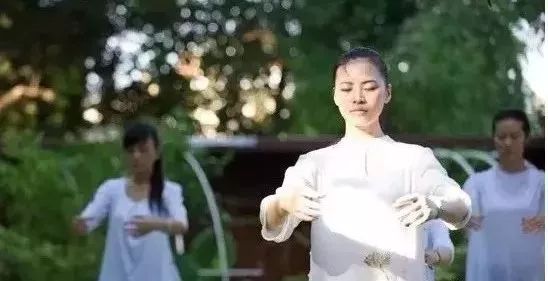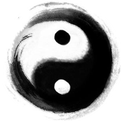
Regardless of whether it is standing meditation (zhang zhuang) or practicing forms (lian jia), the core secret or goal pursued is: xu jing (emptiness and stillness), yi qi (intention and energy), ju fang (gathering and releasing).
Xu Jing
The term “xu” refers to the state where the body exerts no force, and every muscle is relaxed.
Only when one is truly xu can jing (stillness) be easily achieved; both the mind and body can attain stillness, naturally leading to xu.
Thus, xu, jing, and relaxation (song) are an integrated whole and cannot be viewed in isolation. This is the only path to cultivate nei qi (internal energy).
Yi Qi
The term “yi” refers to mental activity; Tai Chi practices intention rather than force.
Therefore, whether standing or practicing forms, movements are directed by yi.
The limbs should not act independently but are guided passively by yi.
“Tai Chi has no hands; the feet move freely” embodies this principle.
When you achieve relaxation, emptiness, and stillness over time, you will develop a sensation within your body: a sinking relaxation down to the soles of your feet, and then rising from the soles up to the Bai Hui (Hundred Meetings) point, flowing like water or air, circulating with your yi. This sensation is nei qi.
What is “qi”? It is energy generated within the body, stimulated and guided by yi.
In push hands (tui shou), it is not about using the body to push someone down, but rather releasing qi through the contact point, thereby releasing energy, causing the opponent to fall.
Ju Fang
“Ju” means to gather nei qi, while “fang” means to release nei qi.
As mentioned above, nei qi is a form of energy.
So how do we cultivate and accumulate it? Simply put, it is through the concept of “song” (relaxation).
Song is one of the most representative concepts in Tai Chi and is fundamental, requiring a lifetime of practice. When you truly achieve relaxation, your Tai Chi skills will improve; the more thoroughly you relax, the better your Tai Chi will become. Otherwise, no matter how beautiful your movements appear or how many forms you learn, you are merely mastering an empty shell. It is like a beautifully crafted model car that looks realistic but has no engine inside. In Tai Chi, this “engine” is nei qi.
Many times, one may think they are quite relaxed, but upon encountering external stimuli, they immediately become stiff. This is because they have not truly relaxed.
To practice song well, one must first resolve their understanding of relaxation.
When first learning Tai Chi, teachers often emphasize relaxation, but students may doubt whether relaxation can truly lead to skill. Later, they may be misled by the idea that “to use strength, one must be relaxed, but to release strength, one must be tense,” resulting in a superficial appearance of relaxation that cannot withstand scrutiny. When engaging with others, they become stiff. Through long-term practice, one gradually realizes the importance of relaxation in Tai Chi and is willing to invest effort into studying it.
Song must be comprehensive; the entire body must be relaxed, with every muscle letting go. The emphasis on relaxation aims to gather nei qi. Tai Chi is a martial art that emphasizes “intention over strength.” At a certain level, the power in Tai Chi is not derived from muscle strength but from the instantaneous release of nei qi, which is immensely powerful. This energy is primarily obtained through relaxation of the body. Thus, in a sense, Tai Chi is a practice of relaxation.
Before achieving nei qi, conventional rules of Tai Chi must still be followed and practiced.
For example, “Zhong” (central alignment) refers to being upright. The axis from the tailbone to the Bai Hui must not be tilted.
Just like a crane on a construction site, the tower must be upright and stable for the arm to move flexibly. Imagine if the tower were tilted or swaying; could it lift anything? In practicing Tai Chi, the body is like the tower; only when it is upright can the arms move flexibly with strength; otherwise, without pushing, it will collapse.
Similarly, a sturdy willow tree sways in a storm, but its trunk remains unmoved due to its deep roots. The branches may dance, but they will not be blown down. The strength of the branches and twigs flows smoothly with the trunk and will not break. However, if there are dead branches or knots, they will easily break due to the lack of smooth energy transfer from the trunk. The same applies to Tai Chi; if the lower body is upright and connected to the arm’s strength, it will not be pushed down. If any part of the body is stiff, like a dead branch, the energy from the lower body cannot be transmitted, making that part vulnerable during push hands.
The Dan Tian (elixir field) is the center of gravity in the human body. Although experts have varying opinions on its exact location, it generally refers to the area one inch below the navel and behind the Ming Men point. The Dan Tian is not a specific point but rather a region.
Understanding the Dan Tian is a process. Initially, there is a strong emphasis on “qi sinking to the Dan Tian,” and practitioners try to sink qi into the Dan Tian, but the more they practice, the stiffer they become, and their feet feel lighter. Gradually, they realize that as long as they are relaxed and empty, the qi in the Dan Tian will naturally arise. Daoism teaches “the way follows nature”; if one pursues it deliberately, it will backfire; the qi that arises naturally from the Dan Tian is the true qi.
Different schools have various methods for utilizing the Dan Tian, but the essence is similar: through relaxation and sinking, the qi from the Dan Tian descends to the soles of the feet, rises up, and is transmitted through the joints to the hands, then released.
I focus on the soles of my feet while not paying much attention to the abdominal Dan Tian. I believe that as long as the entire body is relaxed, with the upper body relaxed and the lower body sinking, a natural rising sensation will occur. The stronger the sinking feeling in the soles, the greater the energy.
When nei qi is generated, its application relies on the guidance of intention. “Yi” refers to mental activity. In practicing forms and push hands, nei qi follows the guidance of intention, moving wherever directed; this is the flow of nei qi. During push hands, one follows the direction of the opponent’s contact point, leading it to one’s own empty space, while the energy (nei qi) from the soles returns to the opponent, causing them to rise. Importantly, the contact point must not exert force; it should not rely on physical movements but rather on the activation of nei qi, and the feet must be able to lift; all of this is accomplished under the direction of intention. The saying from Tai Chi masters, “Tai Chi has no hands; the feet move freely,” illustrates this principle.
The greatest distinction of Tai Chi from other martial arts and sports is its clear philosophical guidance, rooted in the classical Chinese philosophy of Yin and Yang. Ancient Chinese believed that between heaven and earth, all things exist in a relationship of mutual transformation between Yin and Yang. From the vastness of heaven and earth, where the earth is heavy and dark (Yin) and the sky is bright and light (Yang), to the smallest detail, even a little finger contains the unity of Yin and Yang.
The forms and push hands in Tai Chi are permeated with the interplay of Yin and Yang. Concepts such as opening and closing, emptiness and fullness, movement and stillness, and gathering and releasing are all manifestations of Yin and Yang. Different Tai Chi styles emphasize different aspects; for instance, Sun style emphasizes opening and closing, while Chen style emphasizes gathering and releasing, yet both fundamentally embody the transformation of Yin and Yang. Therefore, I believe that as long as one truly grasps the principles of Yin and Yang and the changes between emptiness and fullness, they will intuitively discover a practice that suits them. Merely understanding the experiences and theories of predecessors at face value will not lead to mastery.
Tai Chi teaches you a positive attitude towards life and an uplifting way of living. Young people may not realize this immediately, but once they reach fifty, they will notice a significant difference between those who practice Tai Chi and those who do not. Standing among peers, those who persist in practicing Tai Chi exhibit a noticeable difference in physical condition and mental outlook compared to those who do not. Practical experience proves that consistent Tai Chi practice indeed enhances vitality and preserves youth.

